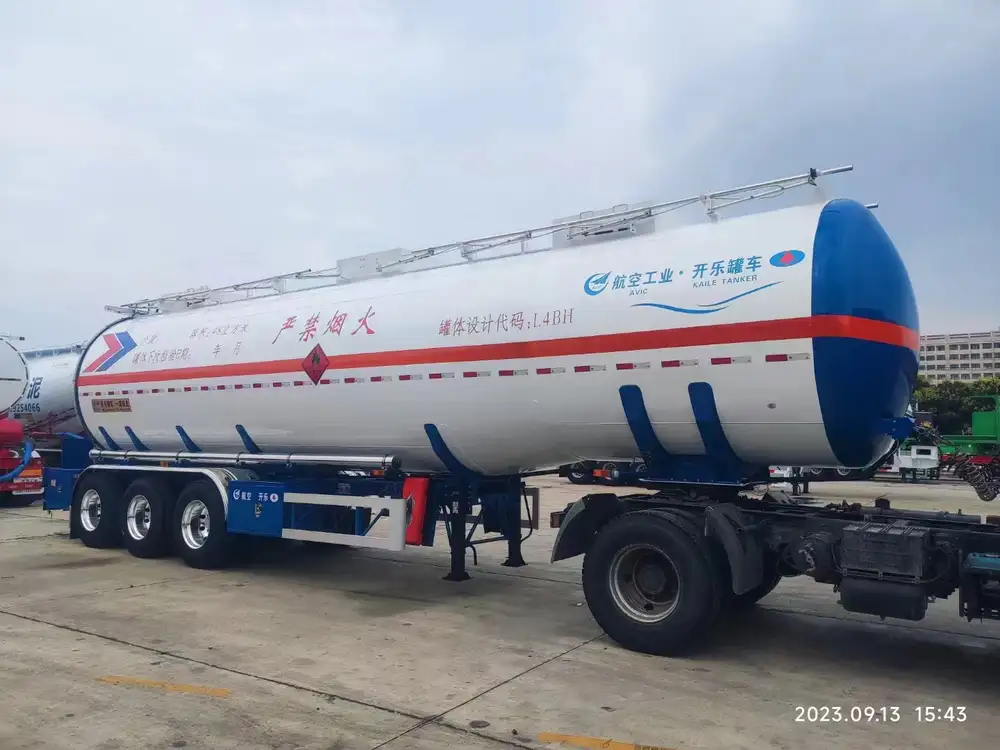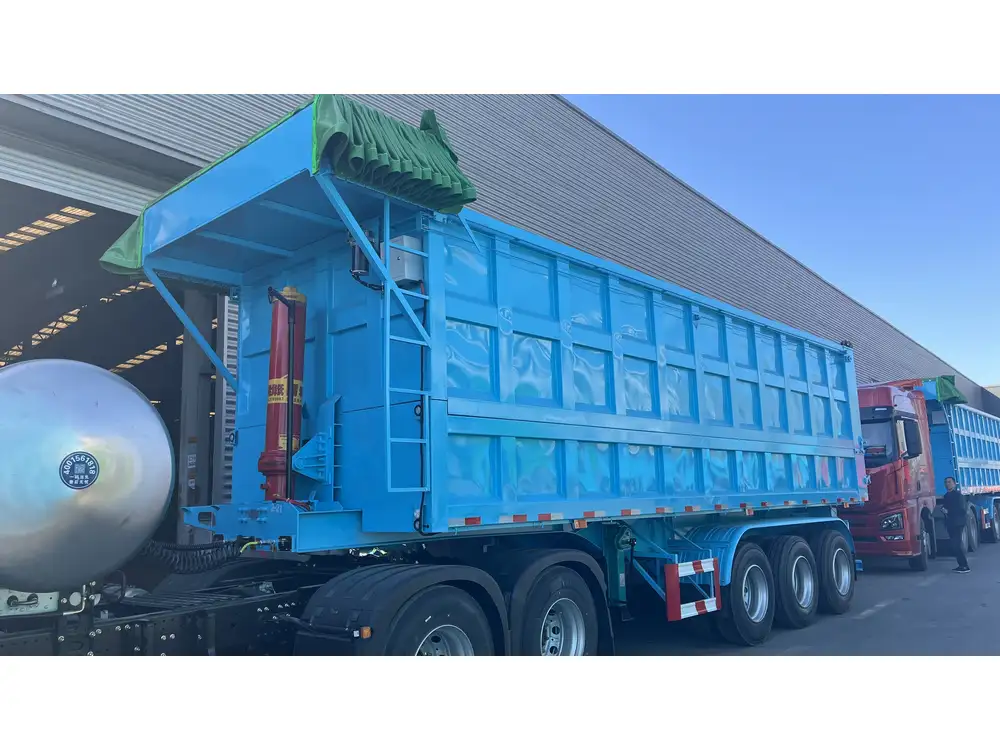When it comes to enjoying the great outdoors in our travel trailers, few things provide more comfort and convenience than Liquid Petroleum (LP) gas. It powers everything from stoves to heaters, making our camping experiences far more enjoyable. However, ensuring that your LP tanks are not only functional but also secured is crucial for safety and optimal performance. In this article, we delve into the essential steps and best practices on how to effectively secure your travel trailer LP tanks.
Understanding the Importance of Securing LP Tanks
Securing LP tanks is imperative for several reasons, including:
- Safety: Loose or improperly mounted tanks can pose serious hazards, leading to leaks or even explosions in extreme cases.
- Regulatory Compliance: Many jurisdictions have specific regulations regarding the safe installation and maintenance of LP systems.
- Efficiency: Well-secured tanks contribute to the overall efficiency of the LP system in your travel trailer.
Common Risks Associated with Unsecured LP Tanks
- Gas Leaks: Unsecured tanks can shift and cause gas line connections to crack or break.
- Accidents and Injuries: An unsecured tank becomes a projectile in an accident, posing risks to passengers and others.
- System Failure: A poorly secured tank can lead to inconsistent fuel supply, disrupting the operation of appliances.

Key Components for Securing LP Tanks
To ensure that your LP tanks are properly secured, you will need several key components:
| Component | Purpose |
|---|---|
| Tank Brackets | Hold the tank securely in place. |
| Straps or Clamps | Offer extra tightness to prevent movement. |
| Ventilation Systems | Allow for safe gas escape in case of leaks. |
| Safety Valves | Prevent over-pressurization and leaks. |
| Fuel Line Connectors | Ensure a reliable connection to your appliances. |
Step-by-Step Guide to Securing Travel Trailer LP Tanks
Step 1: Gather Required Tools and Materials
Before beginning, it is crucial to have the right tools and materials at hand:
- Tools: Wrenches, screwdrivers, pliers, and ratchet straps.
- Materials: Tank brackets, straps or clamps, safety valves, and venting components if not already installed.

Step 2: Verify Tank Sizes and Specifications
Before securing your LP tanks, confirm that they are the correct size and specification for your travel trailer. Commonly, travel trailers use 20 lb or 30 lb tanks, but checking compatibility with your setup is essential.
Step 3: Install Tank Brackets
- Location Selection: Choose a proper location on the trailer where the tanks will be mounted, ensuring they are straight and accessible.
- Mounting: Use the appropriate hardware to secure tank brackets to the frame of your trailer. Follow specific guidelines in the travel trailer manual regarding spacing and height.
Step 4: Fasten the Tanks with Straps or Clamps
- Position Tanks: Place your LP tanks into the installed brackets.
- Secure with Straps: Use heavy-duty straps or clamps to tightly secure the tanks to the brackets. Ensure they are snug but not overly tight, which can cause damage.

Step 5: Install Safety Valves
Safety valves are integral to the LP system. They mitigate risks related to over-pressurization:
- Locate a spot for the valve that is easily accessible yet protected.
- Follow manufacturer instructions for installation.
Step 6: Add a Ventilation System
Proper ventilation is vital for safety:
- Install Vent Hoses: Attach and confirm that the hoses are directed away from the trailer or any potential ignition sources.
- Inspect Regularly: Regular checks ensure that venting functions correctly without blockages or damage.
Step 7: Connect Fuel Lines
- Assess Fuel Lines: Prior to connecting, inspect fuel lines for any signs of damage or wear.
- Connect to Appliances: Attach the fuel lines securely to the appliances within the travel trailer according to manufacturer directives. Ensure all connections are tight to prevent leaks.

Step 8: Perform Safety Checks
- Leak Testing: Use a leak detector solution or soapy water to check for leaks around connections.
- Routine Inspections: Make inspecting the tanks, lines, and connections a part of your regular maintenance routine.
Troubleshooting Common LP Tank Issues
Despite best efforts in securing LP tanks, issues may arise. Here are common problems and resolutions:
| Problem | Solution |
|---|---|
| Gas Leak Detected | Stop using appliances immediately and shut off the tanks. Use a leak detection solution to find the source and repair it. |
| Inconsistent Pressure | Check connections and valves; consider seeking professional inspection if issues persist. |
| Tank Not Secure | Reassess the brackets and straps; retighten or replace if necessary. |
Best Practices for Long-Term Maintenance
To guarantee the longevity and safety of your LP tanks, regularly follow these practices:
- Monthly Inspections: Look for corrosion, leaks, and general wear. Ensure that valve handles can turn freely and that all connections remain tight.
- Annual Professional Checks: Engage a certified technician to perform detailed inspections and necessary repairs.
- Keep an Inventory: Track when tanks were last filled and tested, and stay ahead with replacements before they reach their lifespan limit (typically around 12 years for most tanks).

Frequently Asked Questions (FAQs)
1. How often should I secure my LP tanks?
Ensure that you inspect and secure your LP tanks monthly, especially before embarking on long trips.
2. What should I do if I smell gas?
If you smell gas, immediately turn off the LP supply, evacuate the area, and do not ignite any flames or electrical devices. Contact a professional for assistance.

3. Are there specific rules for LP tank sizes?
Yes, there are regulations regarding the type and size of LP tanks acceptable for travel trailers. Always check local regulations and manufacturer guidelines.
4. How can I tell if my LP system is operating efficiently?
Regular testing with a pressure gauge and inspecting the efficiency of appliances will help determine system performance.
5. Can I use propane tanks for other applications?
It’s essential to use propane tanks specifically designed for travel trailers to ensure compatibility and safety.

Conclusion
Securing travel trailer LP tanks is not just about keeping them in place; it is vital for safety, compliance, and efficiency. By following the outlined steps, you can ensure that your LP system functions correctly, allowing for a worry-free camping experience. Regular inspections and maintenance further enhance the reliability of the LP tanks, permitting you to focus on what truly matters—enjoying your time on the road. Equip yourself with knowledge, maintain your equipment meticulously, and venture forth into the wilderness with confidence.



